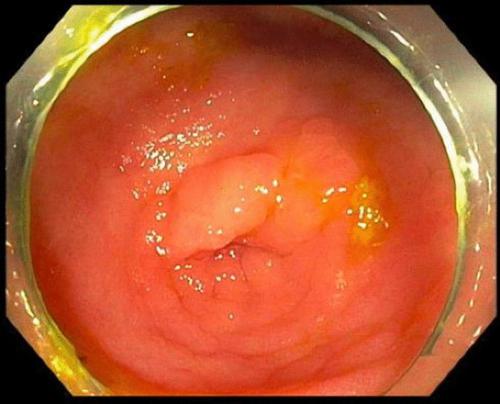Surgical Endoscopy ( IF 3.1 ) Pub Date : 2024-03-04 , DOI: 10.1007/s00464-024-10726-w Carla F. Justiniano , Ilker Ozgur , David Liska , Michael A. Valente , Scott R. Steele , Emre Gorgun

|
Background
Appendiceal orifice lesions are often managed operatively with limited or oncologic resections. The aim is to report the management of appendiceal orifice mucosal neoplasms using advanced endoscopic interventions.
Methods
Patients with appendiceal orifice mucosal neoplasms who underwent advanced endoscopic resections between 2011 and 2021 with either endoscopic mucosal resection (EMR), endoscopic mucosal dissection (ESD), hybrid ESD, or combined endoscopic laparoscopic surgery (CELS) were included from a prospectively collected dataset. Patient and lesion details and procedure outcomes are reported.
Results
Out of 1005 lesions resected with advanced endoscopic techniques, 41 patients (4%) underwent appendiceal orifice mucosal neoplasm resection, including 39% by hybrid ESD, 34% by ESD, 15% by EMR, and 12% by CELS. The median age was 65, and 54% were male. The median lesion size was 20 mm. The dissection was completed piecemeal in 49% of patients. Post-procedure, one patient had a complication within 30 days and was admitted with post-polypectomy abdominal pain treated with observation for 2 days with no intervention. Pathology revealed 49% sessile-serrated lesions, 24% tubular adenomas, and 15% tubulovillous adenomas. Patients were followed up for a median of 8 (0–48) months. One patient with a sessile-serrated lesion experienced a recurrence after EMR which was re-resected with EMR.
Conclusion
Advanced endoscopic interventions for appendiceal orifice mucosal neoplasms can be performed with a low rate of complications and early recurrence. While conventionally lesions at the appendiceal orifice are often treated with surgical resection, advanced endoscopic interventions are an alternative approach with promising results which allow for cecal preservation.
中文翻译:

先进内窥镜检查在阑尾息肉治疗和结果中的作用
背景
阑尾口病变通常通过有限切除或肿瘤切除进行手术治疗。目的是报告使用先进内窥镜干预措施对阑尾口粘膜肿瘤的治疗。
方法
前瞻性收集的数据集中包括 2011 年至 2021 年间接受先进内镜切除术(内镜黏膜切除术 (EMR)、内镜黏膜剥离术 (ESD)、混合 ESD 或联合内镜腹腔镜手术 (CELS))的阑尾口黏膜肿瘤患者。报告患者和病变细节以及手术结果。
结果
在采用先进内镜技术切除的 1005 个病灶中,41 例患者(4%)接受了阑尾口粘膜肿瘤切除术,其中 39% 采用混合 ESD,34% 采用 ESD,15% 采用 EMR,12% 采用 CELS。中位年龄为 65 岁,其中 54% 为男性。中位病变大小为 20 毫米。49% 的患者的解剖是零碎完成的。术后 1 名患者在 30 天内出现并发症,因息肉切除术后腹痛入院,观察 2 天,未进行干预。病理学显示 49% 无蒂锯齿状病变、24% 管状腺瘤和 15% 管状绒毛状腺瘤。患者的随访时间中位数为 8 (0-48) 个月。一名患有无蒂锯齿状病变的患者在 EMR 后出现复发,并通过 EMR 再次切除。
结论
对阑尾口粘膜肿瘤进行先进的内镜干预,并发症发生率低,复发率低。虽然传统上阑尾口病变通常通过手术切除来治疗,但先进的内窥镜干预是一种替代方法,其结果有希望,可以保留盲肠。



























 京公网安备 11010802027423号
京公网安备 11010802027423号